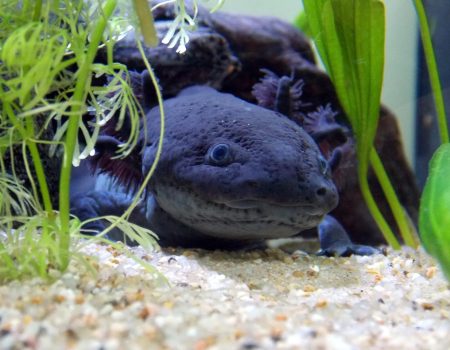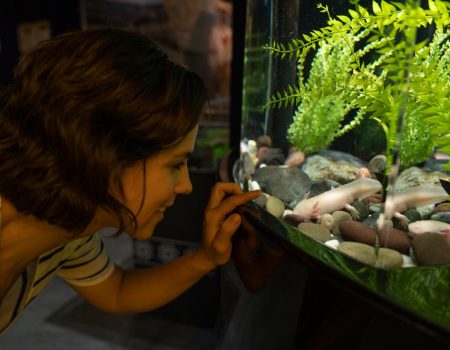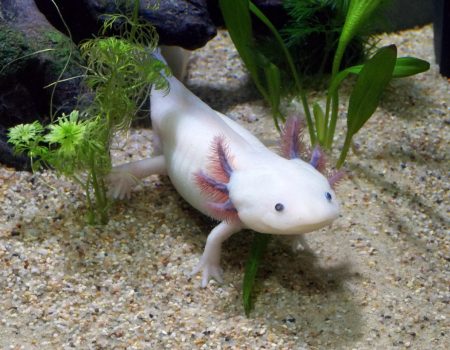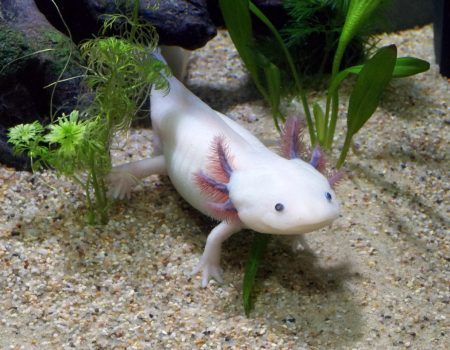Are Axolotls Legal or Illegal in Vermont? Everything You Need to Know
You’re thinking about getting an axolotl, but you’re not sure if Vermont allows them. These little amphibians are fascinating, with their feathery gills and forever-young looks.
They’re a favorite among aquatic pet lovers, but laws around them can be confusing. Some states ban them completely, while others have strict rules. If you live in Vermont, you’re in luck—axolotls are legal here.
But before you rush to set up a tank, there are a few things you need to know. From proper care to potential restrictions, keeping an axolotl responsibly is just as important as knowing the law.
Axolotl Laws in Vermont

Vermont does not classify axolotls as invasive or dangerous, so they are legal to own. Unlike states with strict bans, Vermont allows private individuals to keep them as pets. But even though they’re legal, there are still important regulations you should follow.
No Special Permits Required
In some states, keeping exotic aquatic pets requires a special license. Vermont does not have this rule for axolotls. You don’t need a permit to own, breed, or sell them within the state. However, this doesn’t mean there are no responsibilities. Axolotls need proper care, and some general wildlife and pet laws still apply.
Female axolotls can lay between 300 to 1,000 eggs during mating season, which occurs from March to June.
Importation Rules and Restrictions
While axolotls are legal in Vermont, bringing them in from another state requires caution. Some states, like California and Maine, ban axolotls, so transporting them across state lines can be tricky.
Always buy from a reputable breeder within a legal state to avoid legal issues. If you’re ordering online, check the seller’s location and confirm they can ship to Vermont
Responsible Axolotl Ownership
Owning an axolotl isn’t just about legality. These unique amphibians have special care needs. A proper setup, good diet, and a clean environment are crucial for their well-being.
Setting Up the Right Tank
Axolotls live their entire lives in water, so a well-maintained aquarium is essential. A 20-gallon tank is the minimum size for one adult axolotl, but bigger is always better. They need:
- Cold, dechlorinated water (60-64°F is ideal)
- A filter with gentle flow (strong currents stress them out)
- A bare bottom or fine sand substrate (gravel can cause deadly impactions)
- Hiding spots and decorations to reduce stress
Regular water changes are key. Ammonia buildup is dangerous, so a good filtration system is a must. Cycling the tank before introducing your axolotl ensures a stable environment.
Feeding Axolotls the Right Diet
Axolotls are carnivorous and need a high-protein diet. Their main food sources include:
- Earthworms (a staple food, nutritious and easy to digest)
- Axolotl pellets (specially formulated for them)
- Frozen or live bloodworms (a good treat but not a main diet)
- Small feeder fish (occasionally, but only from disease-free sources)
Avoid hard foods like mealworms and crickets, as they’re tough to digest. Overfeeding can lead to obesity, while underfeeding causes malnutrition. A feeding schedule of 2-3 times per week for adults keeps them healthy.
Handling and Health Considerations
Axolotls are delicate and should not be handled often. Their skin is sensitive, and excessive handling can stress them out. If you need to move your axolotl, use a soft net or container with water.
Common health issues include:
- Fungal infections (white cotton-like growths, usually caused by poor water quality)
- Ammonia burns (red, inflamed skin from dirty water)
- Floating issues (can indicate gas buildup or impaction)
Keeping the water clean and at the right temperature prevents most problems. A stressed axolotl is more likely to get sick, so maintaining a proper habitat is key.
Ethical and Legal Responsibilities
Even though axolotls are legal in Vermont, responsible ownership is important. They should never be released into the wild, as they can disrupt ecosystems.
Axolotls can live between 10 to 15 years in the wild, showcasing their longevity among amphibians.
Axolotls are fully aquatic and wouldn’t survive in Vermont’s natural waters. If you can’t care for your pet anymore, rehoming through a responsible owner or rescue group is the best option.
Breeding Axolotls and Selling Them
Since axolotls are legal in Vermont, breeding them is allowed. But it’s not as simple as just pairing two axolotls together. They can lay hundreds of eggs at once, and raising hatchlings requires time, space, and proper care. Before breeding, consider:
- Tank space for baby axolotls (each one needs its own space as it grows)
- A reliable food source (baby axolotls need live food like brine shrimp)
- Finding responsible buyers (selling to unprepared owners isn’t ethical)
If you plan to sell axolotls, research local pet laws and only sell to people who understand their care. Avoid selling to states where axolotls are illegal, as this could cause legal trouble.
Why Vermont Allows Axolotls When Some States Don’t
Some states ban axolotls due to concerns about them becoming invasive or spreading disease. Vermont doesn’t have these concerns, so axolotls are not restricted. They wouldn’t survive in Vermont’s natural environment, which reduces the risk of them becoming an invasive species.
Current estimates suggest that fewer than 1,000 axolotls remain in the wild, leading to their classification as critically endangered by the IUCN since 2006.
However, this doesn’t mean laws can’t change. If people start releasing unwanted axolotls into the wild or selling them irresponsibly, Vermont could introduce stricter regulations. Being a responsible owner helps keep axolotls legal in the state.
Final Thoughts on Keeping Axolotls in Vermont
Axolotls are completely legal in Vermont, and no special permits are needed to own or breed them. However, responsibility matters just as much as legality.
Owning an axolotl means providing the right tank setup, diet, and care. Keeping their habitat clean, avoiding handling, and preventing illegal transportation all help ensure they stay a safe and legal pet in Vermont.
If you’re ready to own one, buy from a reputable breeder and learn everything about their care. These amazing amphibians live for over ten years with proper care, making them a long-term commitment.
By following good care practices, you help ensure that axolotls remain legal and well-loved pets in Vermont.
References
Why are Axolotls Illegal to Own in Some States and Provinces? – Axolotl Central
Every State Where It’s Illegal to Own an Adorable Axolotl as a Pet – The FW
Can you have a pet opossum in Vermont? – Quora
Why are Axolotls legal to own if they are one the critically endangered animals? – Reddit
Where are axolotls legal? – Reddit
Disclaimer
This content on Bagrica is for informational purposes only. Consult a professional for pet care or farming advice. Bagrica is not liable for any actions taken based on this information.







No Comment! Be the first one.